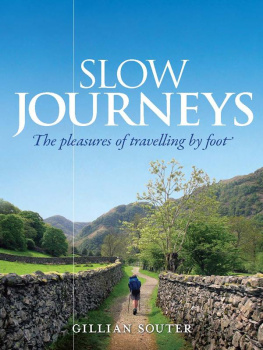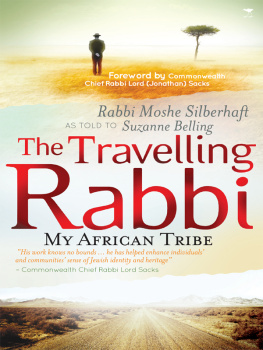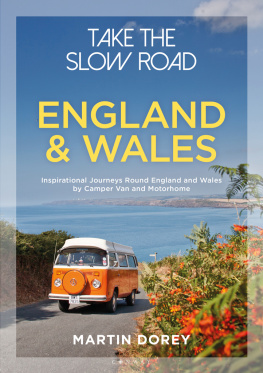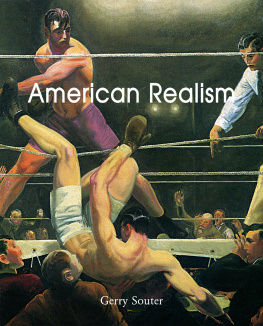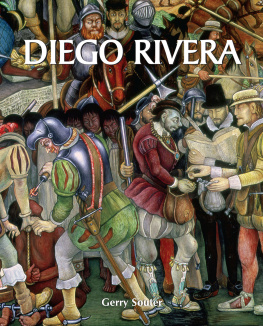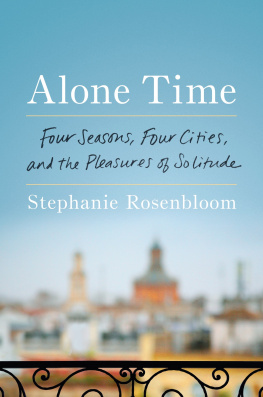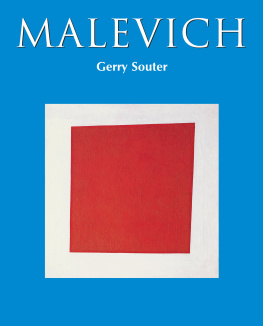Gillian Souter - Slow Journeys: The Pleasures of Travelling By Foot
Here you can read online Gillian Souter - Slow Journeys: The Pleasures of Travelling By Foot full text of the book (entire story) in english for free. Download pdf and epub, get meaning, cover and reviews about this ebook. year: 2010, publisher: Allen & Unwin, genre: Home and family. Description of the work, (preface) as well as reviews are available. Best literature library LitArk.com created for fans of good reading and offers a wide selection of genres:
Romance novel
Science fiction
Adventure
Detective
Science
History
Home and family
Prose
Art
Politics
Computer
Non-fiction
Religion
Business
Children
Humor
Choose a favorite category and find really read worthwhile books. Enjoy immersion in the world of imagination, feel the emotions of the characters or learn something new for yourself, make an fascinating discovery.
- Book:Slow Journeys: The Pleasures of Travelling By Foot
- Author:
- Publisher:Allen & Unwin
- Genre:
- Year:2010
- Rating:5 / 5
- Favourites:Add to favourites
- Your mark:
- 100
- 1
- 2
- 3
- 4
- 5
Slow Journeys: The Pleasures of Travelling By Foot: summary, description and annotation
We offer to read an annotation, description, summary or preface (depends on what the author of the book "Slow Journeys: The Pleasures of Travelling By Foot" wrote himself). If you haven't found the necessary information about the book — write in the comments, we will try to find it.
Slow Journeys: The Pleasures of Travelling By Foot — read online for free the complete book (whole text) full work
Below is the text of the book, divided by pages. System saving the place of the last page read, allows you to conveniently read the book "Slow Journeys: The Pleasures of Travelling By Foot" online for free, without having to search again every time where you left off. Put a bookmark, and you can go to the page where you finished reading at any time.
Font size:
Interval:
Bookmark:
Slow
Journeys
Other books by Gillian Souter
Classic Walks in Western Europe
Walking France
Walking Italy

GILLIAN SOUTER

First published in 2009
Copyright Gillian Souter 2009
All rights reserved. No part of this book may be reproduced or transmitted in any form or by any means, electronic or mechanical, including photocopying, recording or by any information storage and retrieval system, without prior permission in writing from the publisher. The Australian Copyright Act 1968 (the Act) allows a maximum of one chapter or 10 per cent of this book, whichever is the greater, to be photocopied by any educational institution for its educational purposes provided that the educational institution (or body that administers it) has given a remuneration notice to Copyright Agency Limited (CAL) under the Act.
Allen & Unwin
83 Alexander Street
Crows Nest NSW 2065
Australia
Phone: (61 2) 8425 0100
Fax: (61 2) 9906 2218
Email: info@allenandunwin.com
Web: www.allenandunwin.com
Cataloguing-in-Publication details are available
from the National Library of Australia
www.librariesaustralia.nla.gov.au
ISBN 978 1 74175 965 5
Internal design by Emily ONeill
Set in 11.5/16 pt Granjon by Bookhouse, Sydney
Printed and bound in Australia by Griffin Press
10 9 8 7 6 5 4 3 2 1
To John, for bearing more than just a backpack
CONTENTS


Few men know how to take a walk. The qualifications... are endurance, plain clothes, old shoes, an eye for nature, good humour, vast curiosity, good speech, good silence and nothing too much.
RALPH WALDO EMERSON, 1858
T he working title of this volume was Walk Walk Walk. It held appeal, partly because the thought of someone enquiring for it at a bookshop honking like a goose amused me, but also because I wanted to convey to potential readers that this would be a book not merely on ambling or moseying about but on striding out with purpose and a destination. Then I realised that no one likes to be mistaken for a goose and, rather than risk the book remaining unbought and unread, I had better spell out my intent in a subtitle. So you are warned: when the term walking is used in this book, it means covering a good distance over a series of days, with a view to seeing the world. Your long walk may take you through your own neighbourhood or it may lead you further afield; exploring the world at walking pace is a wonderful form of slow travel. If you have limited time, the pleasures of even a few days spent walking with a destination in mind and a bit of decent weather are considerable.
For those in the know, there are books in abundance on hiking. If they are not about specific routes, they tend to include the words survival and wilderness in the title and are almost always written by men with beards. Such books are usually concerned with off-track walking: finding your own way across a landscape while being self-reliant for food and shelter. For some tough souls, this mode of walking is the option of choiceand it does have the obvious benefit of taking you places where few have been and where the environment is at its most pristine. But it also means you have to carry an awful lot and cope with whatever nature might throw at you, all the while eating some very mediocre meals. On a footpath, you can cover more distance and see a lot more of the landscape and less of the ground. Your path will pass by huts and hamlets where youll be well fed and sheltered. Travelling on a durable path, you will do less damage to the environment you pass through. You will also do less damage to you: a path offers a route free of hazards such as thorns, vines and stinging nettles. I walk off-track in Australia with a local group of enthusiasts and the state of my legs attests to the injuries that cruel vegetation can inflict. Sword grass, needle bush and dagger hakea are well named!
There are generally good reasons that footpaths follow the route they do: a path may be the easiest route over a high mountain pass, or it may be an ancient right of way connecting villages via land that cannot be traversed by car. Footpaths are seldom direct lines from A to B: they are the negotiations of humans with the lie of the land. They may have been worn by the mules of traders and itinerant workers, or perhaps by the soles of pilgrim souls. Broader paths may be ancient droving roads used for the the movement of livestock up to summer pastures and back to winter shelter, or the routes of Roman legions defending far-flung provinces. Walking in the footsteps of others adds an extra dimension to your journey. Lastly, there are few things more pleasing to the eye than a narrow path winding oer the brow of a hill; the very thought makes me come over all nostalgic. Such a path seems to draw the eye and beckon the viewer with the promise of a destination. For all of these reasons, this book does not concern itself with navigating a route off-track.
Increasingly, leisured societies are enjoying distance walking as a pastime. Australians bushwalk everywhere, even in desert and along beaches where there are no bushes. New Zealanders tramp and South Africans trail. Those in the United States hike or backpack (while backpackers elsewhere are travellers doing it cheap). The British used to ramble, but these days theyre more likely to hillwalk, which is far more prosaic. Italians who are feeling energetic stretch the limbs for quattro passi. The French, in true Gallic style, have made walking an art form with numerous terms of discourse: balade for a short stroll, tour for a circuit, granderandonne for a seriously long walk, and even a nameflnerie for an amble undertaken with no particular destination but with an inquiring mind. According to the historian Simon Schama, the French invented the waymarked leisure trail in 1835 or so, when Claude-Franois Denecourt splashed blue paint on trees to mark a ten-kilometre walk through the forest of Fontainebleau. He followed this up with four other routes, published a short guide noting points of interest, and so made popular the pastime of hiking. Within two decades, there were 150 kilometres of marked trails through that forest and thousands of citizens arrived each weekend to tread them. Fortunately, there are now more than 180,000 kilometres of waymarked paths crisscrossing France, so we dont have to bump into each other in Fontainebleau. Indeed, there are now blazed walking trails all over the world.
I am not alone in trying to share the pleasures of walking, and there are many fine essays that will do the job much more pithily. Following social convention, the joys youve experienced on a long-distance excursion have to be scattered frugally into various conversations over time. Im personally fed up with waiting patiently for my turn to relate anecdotes, so here it is: a book that will deplete my cache of stories and force me to go in search of fresh ones.
A sensible reader might ask whether I am qualified for the task at hand. Perhaps: along with my map-loving partner, John, I have walked a great deal in Europe and Britain and a fair bit in New Zealand and Australiaand I am extremely opinionated, which is a good start. And theres the nub: walking isnt a science that requires years of study, or a craft that demands half a lifetime of apprenticeship. As Emerson realised, there are very few qualifications. Its simply a matter of putting on your old boots, hoisting your pack and heading off down that winding path.
Next pageFont size:
Interval:
Bookmark:
Similar books «Slow Journeys: The Pleasures of Travelling By Foot»
Look at similar books to Slow Journeys: The Pleasures of Travelling By Foot. We have selected literature similar in name and meaning in the hope of providing readers with more options to find new, interesting, not yet read works.
Discussion, reviews of the book Slow Journeys: The Pleasures of Travelling By Foot and just readers' own opinions. Leave your comments, write what you think about the work, its meaning or the main characters. Specify what exactly you liked and what you didn't like, and why you think so.

